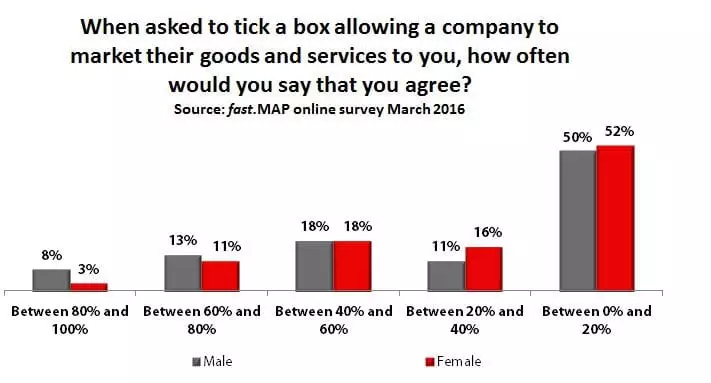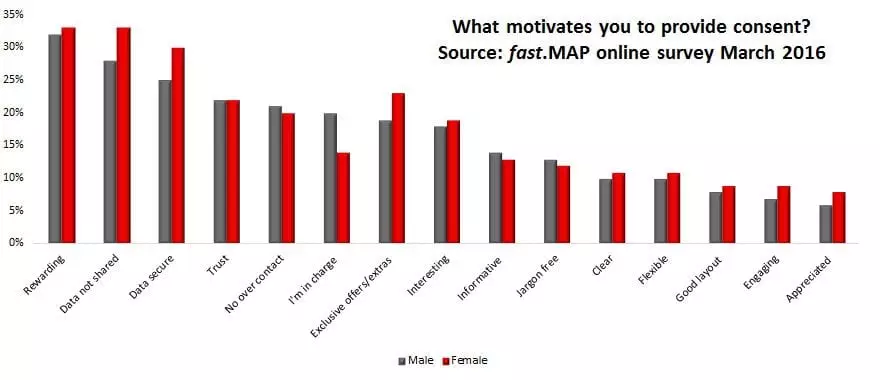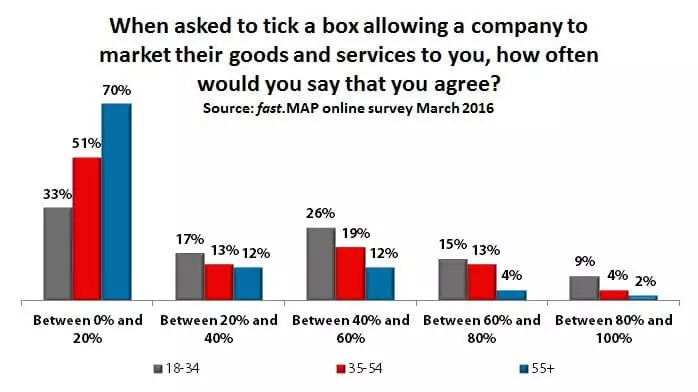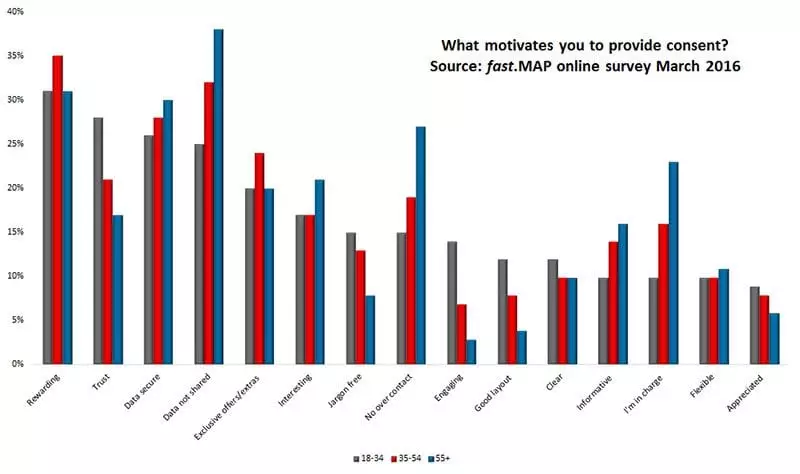Get up close and personal to persuade people to allow fundraising contact
Charities which are serious about persuading more people to consent to fundraising contact could start by tailoring their permission statement wording to target their key demographic groups. A good place to begin would be with the two major identifiers – age and gender.
Taken at face value it appears as though men and women are equally likely to give permission to allow a charity to make contact. But, as the chart below illustrates, it’s no good making assumptions without examining the detail. Men and women of different ages behave differently – no surprises there then!

Source: fast.MAP online survey March 2016
Nor is it surprising that each gender is prompted by different motivations to consent to fundraising. For example, as the chart below shows, women are more concerned with data security and choice of contact method than men are.
This is why fundraisers (the experts in persuasion) need to use their knowledge of these preferences and apply all their marketing skills to convince potential and current donors to consent to marketing.

Source: fast.MAP online survey March 2016
But discriminating by gender alone is not enough. There is a significant divergence of consent levels among different age groups. Young people give marketing consent far more frequently than the over-55s – 70% of whom grant marketing consent less than 20% of the time.

Source: fast.MAP online survey March 2016
And just as divergent are the reasons the various age bands give for allowing consent. The over-55s require data security and to remain in control. While 18 to 34s are motivated by engagement and trust. This indicates the potential consent level boost to be gained by creating different permission statements for different media.

Source: fast.MAP online survey March 2016
fast.MAP’s Consent Optimising Benchmarks illustrate that changing only a few words can drastically affect the number of fundraising consents. Other changes, may have a similarly drastic effect on your charity’s Individual Permission Value (IPV) – use the free fast.MAP IPV calculator to work out what it is so you can monitor improvements.
A single permission statement is today’s norm, but it doesn’t have to be. It’s time to consider differences between audiences if charities are to minimise the database shrinkage forecast when the already-agreed EU data protection legislation comes into force.
You can download our guide to creating charity permission statements for free using the code COGCH0316.
Advertisement



